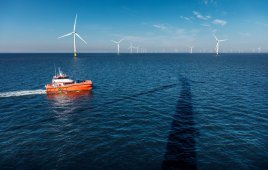This article was first published by Wind Energy Update.
Asset owners highlighted the need for robust end-of-warranty handover processes at the 3rd Annual Wind Optimization & Maintenance Canada conference in Toronto. “This is not the place to do short cuts and look to save dollars,” said Alex Couture, director of generation at EDF Energies Nouvelles (EDF EN) Canada, which operates more than 13 GW of wind and 24 M of solar across the country.
Ian MacRobbie, the general manager of Enbridge, a large energy distribution and transmission company which also operates wind farms across North America, said “don’t underestimate the time it takes” for basic handover tasks such as turbine walk-downs.
MacRobbie said Enbridge faced significant time pressures in coming off warranty with two 99 MW wind projects in Ontario. In both cases, he said, Enbridge weighed up carrying out a service extension with the original equipment manufacturer (OEM) against contracting an independent service provider or moving to a self-performance operations and maintenance (O&M) regime. Enbridge chose self-performance for both wind farms, having first carried out a cost evaluation that included internal labor changes and failure frequency analysis. For the latter, MacRobbie said, it was important for asset owners to draw on the information accrued from machines operating under warranty.
“You should have access to volumes and volumes of data,” he said, relating to the gearbox, generator and main bearing borescope readings and inspections. Using this data, MacRobbie said, Enbridge had been able to make the switch to self-perform without an impact on production. When estimating component failures, “either we’ve been lucky or we were very conservative,” he said. As a result, he asserted: “We haven’t seen the failure rates we expected.”
In contrast, being able to access this kind of information, along with detailed supervisory control and data acquisition (SCADA) readings, could be problematic once an asset owner has given up its relationship with an OEM. “Turbine SCADA and software is a really big deal,” MacRobbie claimed. “Don’t overlook the headache and aggravation that it may cause.”
Couture confirmed that to get full access to SCADA readings, post warranty is “always a challenge. It’s a big problem and a big frustration.” Unlike Enbridge, EDF EN employs a range of O&M arrangements across its Canadian wind assets. An 898 MW tranche of projects commissioned between 2013 and 2015 has turbine maintenance through the OEM, Senvion, and balance of plant (BOP) O&M through EDF EN’s sister company EDF Renewable Services (EDF RS).
To read the full 28-page article, click here.
Filed Under: News, O&M



